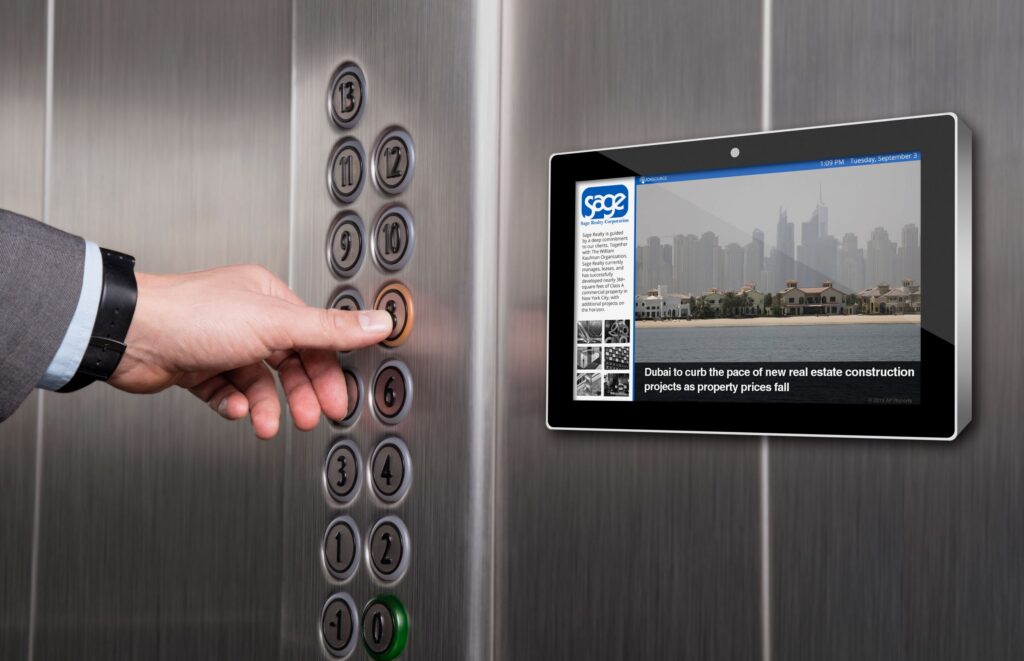Table of Contents
- Introduction to AI in Small Elevators
- Prioritizing Safety Through Technology
- Enhancing Safety in Small Elevators with AI
- Improving Efficiency with AI-Driven Data Analysis
- Contributing to Environmental Sustainability
- Enhancing Accessibility with AI
- Future Prospects of AI in Small Elevators
- FAQs
Artificial Intelligence in Small Elevators
Introduction to AI in Small Elevators
As our world rapidly advances, terms like “algorithm” and “artificial intelligence” (AI) have become part of our daily vocabulary. From voice assistants like Alexa to smartphone features like Siri, AI surrounds us in many forms. But have you ever considered the integration of artificial intelligence into small elevators?
It might sound futuristic, but AI in small elevators is already a reality. These elevators are leveraging artificial intelligence to ensure smooth operations and optimal management of people flow, enhancing safety and efficiency.
Prioritizing Safety Through Technology

In an age where technology transforms every aspect of our lives, the elevator industry is no exception. The integration of AI into small elevators is revolutionizing how these systems operate, providing a safer, more efficient, and more user-friendly experience.
Elevator digitization enhances a building’s value, appeal, and adaptability, transforming the user experience. AI enables businesses to automate processes, make data-driven decisions, and access information swiftly. When combined with blockchain technology, it ensures transparency and security in organizational operations, paving the way for expansion and innovation. Together, these technologies create intelligent systems that guarantee safe and intelligent vertical mobility.
Enhancing Safety in Small Elevators with AI
The adoption of AI in the elevator industry marks a significant leap forward in safety. Thanks to advanced sensors, predictive maintenance can identify abnormalities or emergency conditions like elevator overloads or foreign objects. AI-powered small elevators continuously monitor system performance, allowing for prompt and focused actions to maintain safety standards.
Improving Efficiency with AI-Driven Data Analysis
Small elevators now feature advanced control systems powered by AI and machine learning. These systems analyze data in real time, adapting to usage patterns to optimize traffic flow, reduce wait times, and improve overall system efficiency. This real-time data analysis allows for better management of elevator operations, ensuring a seamless experience for users.
Contributing to Environmental Sustainability
AI in small elevators also contributes to environmental sustainability. Intelligent control systems adjust energy consumption based on actual demand, significantly reducing waste and environmental impact. By optimizing energy use, AI-driven elevators help create greener buildings and contribute to global sustainability efforts.
Enhancing Accessibility with AI
Accessibility is a crucial consideration in modern elevator design, particularly for the elderly and individuals with disabilities. AI-equipped small elevators feature intuitive touchscreen panels, voice announcements, and command capabilities, ensuring all users can navigate the system easily and independently. These innovations make elevators more accessible and user-friendly for everyone.
Future Prospects of AI in Small Elevators
The future of AI in small elevators looks promising. As technology continues to evolve, we can expect even more sophisticated systems that enhance safety, efficiency, and accessibility. The integration of AI and other emerging technologies will continue to revolutionize the elevator industry, providing smarter and more sustainable solutions for vertical mobility.
To learn more, read the book here.
FAQs
How does AI improve safety in small elevators?
AI improves safety in small elevators through predictive maintenance. Sophisticated sensors detect anomalies or emergency situations, such as elevator overloads or foreign objects, allowing for prompt and focused actions to maintain safety standards.
How does AI-driven data analysis enhance elevator efficiency?
AI-driven data analysis enhances elevator efficiency by analyzing real-time data and adapting to usage patterns. This optimizes traffic flow, reduces wait times, and improves overall system efficiency, ensuring a seamless experience for users.
What are the environmental benefits of AI in small elevators?
AI in small elevators offers environmental benefits by using intelligent control systems to adjust energy consumption based on actual demand. This reduces waste and environmental impact, contributing to greener buildings and global sustainability efforts.
How does AI enhance accessibility in small elevators? (To Know More, Click Red Marked.)
AI enhances accessibility in small elevators through features like intuitive touchscreen panels, voice announcements, and command capabilities. These innovations ensure that all users, including the elderly and individuals with disabilities, can navigate the system easily and independently.
What is the future of AI in small elevators?
The future of AI in small elevators looks promising, with continued advancements in technology leading to even more sophisticated systems. These developments will further enhance safety, efficiency, and accessibility, revolutionizing the elevator industry with smarter and more sustainable solutions for vertical mobility.
Through these innovations, AI is not only reshaping how small elevators operate but also improving safety, efficiency, and accessibility, making them fit for the future.
Many elevator suppliers are enabling this, feature on their eleavators, like Kone, Otis, Kleeman, Nidec & Thysencrup.





Pingback: Breath Fresh with Hepa: Elevator Disinfection System
Pingback: Advanced Elevator Solutions: Enhancing Efficiency and Safety 2030